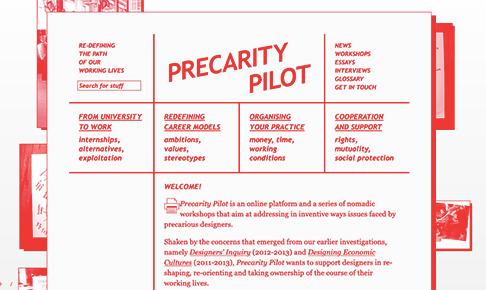David Stairs
Designers are such pragmatists.

Look at any form of commercial online instruction platform and you will be underwhelmed by volume of courses meant to help people improve their marketability. Whether you are obsessing over the need to improve your design skills through LinkedIn Learning (formerly Lynda.com, now a subsidiary of Microsoft), or you are afraid you’re going to miss the AI revolution and have taken out a contract with Udacity, the bottom line always seems to be to find ways to help people participate in The Great Sales Pitch Experiment, aka Selling the Earth.
Happily, there are those among us who don’t give a shit about selling stuff, and some of these people are even designers!
One of the earliest practices of this sort has to be Anthony Dunne and Fiona Raby. Their texts, Speculative Everything and Hertzian Tales, both from MIT Press, are fundamental to an understanding of utilizing design for something other than commerce.
Dunne and Raby involve themselves in “projects” investigating alternatives to contemporary reality. In Design Noir (Bloomsbury 2021), a reintroduction and extension of Hertzian Tales for a new audience, one can see their experiments with furniture that serves a variety of unusual functions, from self-geopositioning to degaussing. This ain’t IKEA baby, but a way of reframing domesticity for the 21st century.
As with their projects from Speculative Design, like placing a landscape on a moving train, or developing a new set of tools for urban foragers, Dunne and Raby successfully prove that designers have a role to play in basic research that has nothing to do with quality circles or product evaluation.
Another studio working at the fringes of digital/social research is dmstfctn, formerly known as the Demystification Committee. A collaboration of designers in London and Berlin, DMSTFCTN sets itself the goal of “studying the intensities of late capitalism.”
Through a series of film, video, and programming projects, DMSTFCTN’s website provides a menu of their work reaching back six years investigating such topics as combining a beachwear collection with a tax evasion scheme, and a film about the survival of money.
Finally, there is the Swiss/British collective Brave New Alps. BNA’s projects reaching back a decade are focused upon social and environmental issues. I first became aware of them when I came across their Precarity Pilot a couple years back. A series of workshops recognizing the impossible demands of the marketplace on designers, the Precarity Pilot encouraged designers to conceive of a new, healthier economic environment, then build it. More recent projects include a series of labs surrounding alpine communities, and an eco-social design mapping project.
All in all, there is not half-enough discussion among designers of an anti-capitalist alternative for our future life world. I am happy to note the works of these people, and trust they are just the tip of an iceberg that will need to surface if we are to get off what John Zerzan calls a “death trip.”
David Stairs is the founding editor of the Design-Altruism-Project.










